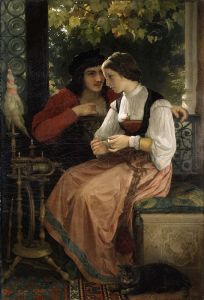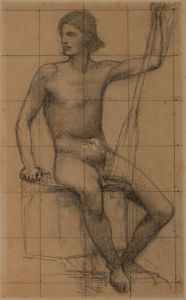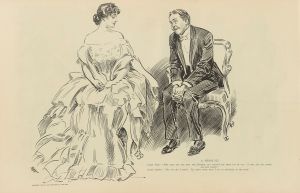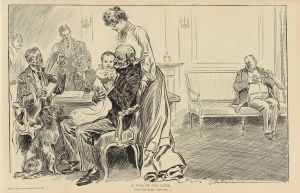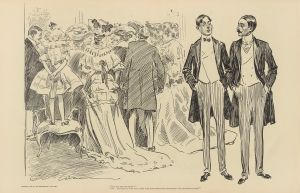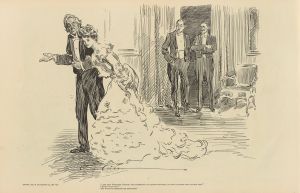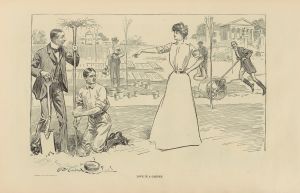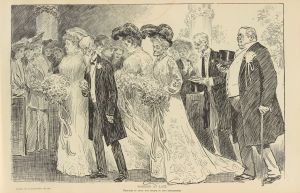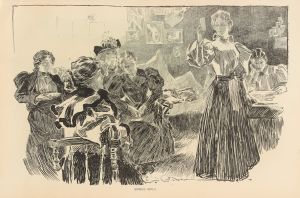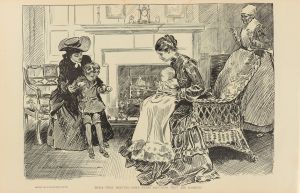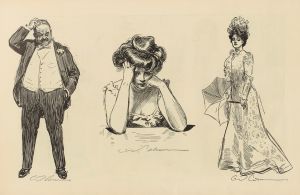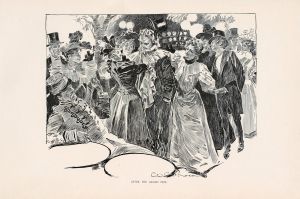
Big game
A hand-painted replica of Charles Dana Gibson’s masterpiece Big game, meticulously crafted by professional artists to capture the true essence of the original. Each piece is created with museum-quality canvas and rare mineral pigments, carefully painted by experienced artists with delicate brushstrokes and rich, layered colors to perfectly recreate the texture of the original artwork. Unlike machine-printed reproductions, this hand-painted version brings the painting to life, infused with the artist’s emotions and skill in every stroke. Whether for personal collection or home decoration, it instantly elevates the artistic atmosphere of any space.
Charles Dana Gibson was an influential American illustrator, best known for his creation of the "Gibson Girl," an iconic representation of the American woman at the turn of the 20th century. While Gibson's work primarily focused on illustrations for magazines and books, he also created standalone pieces that captured the social and cultural nuances of his time. One such work is "Big Game," which, like many of his illustrations, reflects the societal attitudes and interests of the era.
"Big Game" is a black-and-white illustration that showcases Gibson's signature style, characterized by detailed line work and a keen eye for capturing human expressions and interactions. The illustration likely depicts a social scene, possibly involving a hunting or sporting event, which was a popular theme in the late 19th and early 20th centuries. Gibson's work often included elements of satire and social commentary, subtly critiquing or highlighting the behaviors and norms of the upper classes.
Gibson's illustrations were widely published in magazines such as Life, Harper's Weekly, and Scribner's, reaching a broad audience and influencing public perceptions of fashion, gender roles, and social etiquette. The "Gibson Girl," in particular, became a cultural phenomenon, embodying the idealized image of feminine beauty and independence during the Progressive Era. While "Big Game" may not have achieved the same level of fame as the "Gibson Girl," it nonetheless contributes to the body of work that cemented Gibson's reputation as a keen observer of American society.
The context of "Big Game" within Gibson's oeuvre suggests an exploration of themes related to leisure and class. During the late 19th and early 20th centuries, hunting and other outdoor sports were often associated with the leisure activities of the wealthy. Illustrations like "Big Game" would have resonated with contemporary audiences familiar with these pastimes, either through direct participation or through popular media representations.
Gibson's ability to capture the subtleties of social interaction and his attention to detail made his work both entertaining and thought-provoking. His illustrations often featured well-dressed men and women engaged in various activities, with a focus on the dynamics between the sexes and the social expectations placed upon them. This approach not only provided visual enjoyment but also invited viewers to reflect on their own societal norms and behaviors.
In summary, "Big Game" by Charles Dana Gibson is an example of the artist's skill in illustrating scenes that reflect the cultural and social milieu of his time. While specific details about the illustration's content and reception may not be extensively documented, its existence within Gibson's broader body of work highlights his impact on American visual culture and his role in shaping the public's understanding of social themes during the early 20th century.





